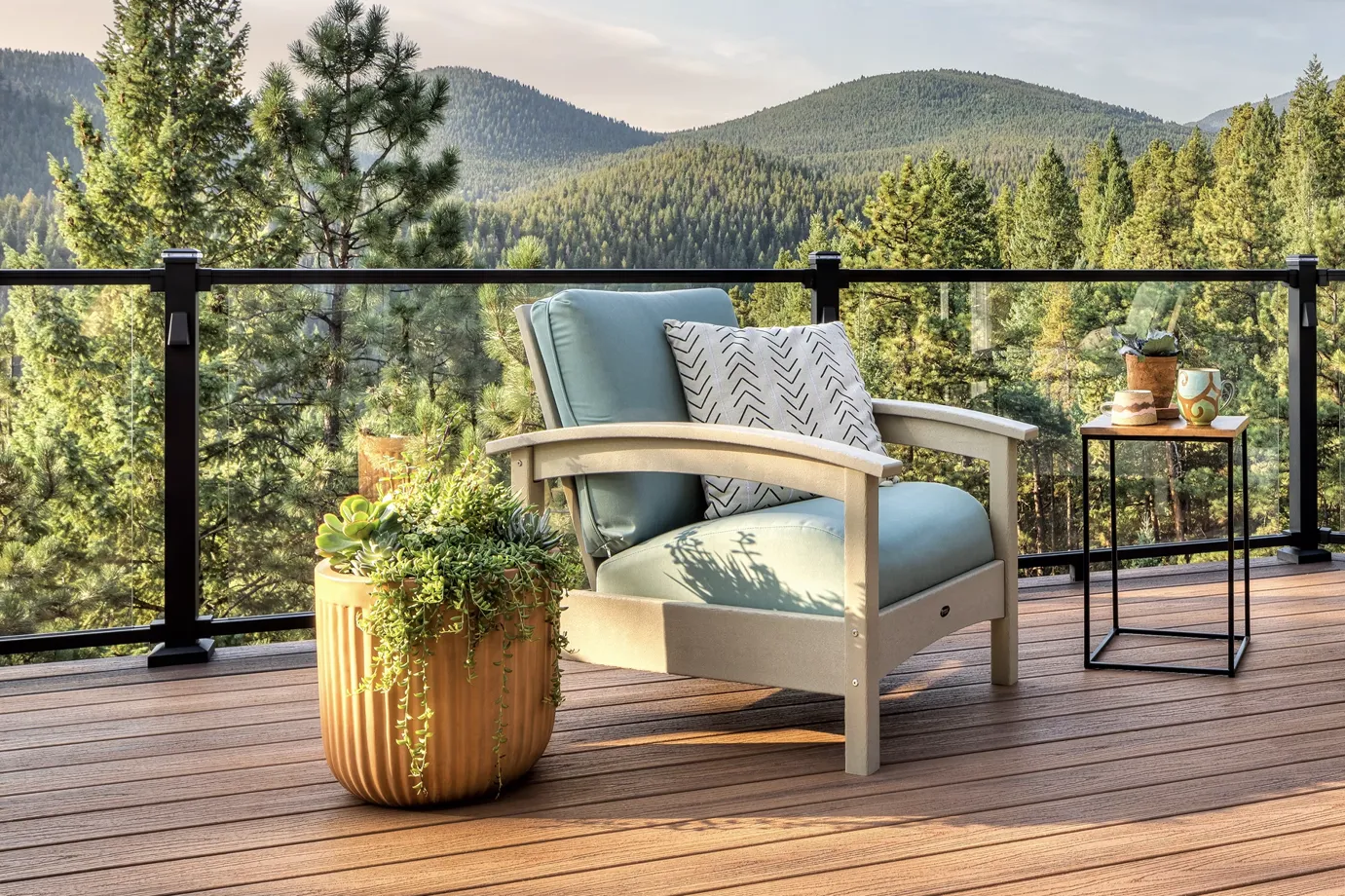The Evolution of Deck Materials: From Wood to Composite
Introduction
The journey of deck materials has seen a significant transformation over the years, evolving from traditional wood to advanced composite solutions. This evolution reflects broader trends in building materials that prioritize durability, maintenance, and environmental impact. Today, homeowners and builders have a range of options that cater to different aesthetics, budgets, and functional needs.

The Traditional Choice: Wood
Overview of Wood Decks
Wood has been the quintessential choice for decking for centuries, prized for its natural beauty and robust performance. It offers a classic look that many homeowners desire and is traditionally sourced from a variety of tree types.
Advantages of Wood
Wood decks provide a warm, authentic feel that many homeowners just can’t do without–’Gotta have it!’ Available options range from cedar, redwood, and pressure-treated lumber, to exotic hardwoods. Each type brings its unique hues and grains to the table. Wood is also known for its ability to be customized with stains and finishes that enhance its natural patterns.
Considerations with Wood
Despite its aesthetic appeal, wood requires significant upkeep including regular staining, sealing, and protection from moisture and pests. Over time, wood can suffer from wear and tear due to environmental exposure, leading to additional costs and efforts in maintenance.
The Rise of Composite Decking
Introduction to Composite Materials
Composite decking emerged as a revolutionary alternative to wood in the late 20th century. Made from a blend of wood fibers and recycled plastics, this material was designed to maintain the look of wood while overcoming many of its maintenance challenges.
Advantages of Composite Decks
Composite decks are celebrated for their durability and low maintenance requirements. Unlike wood, composites resist fading, staining, and rotting, requiring just basic cleaning to maintain their appearance. They also offer a consistent look without the natural imperfections of wood.
Environmental and Longevity Benefits
One of the compelling reasons to choose composite materials is their environmental benefit. Made often from recycled wood, plastics, and other materials, composites reduce waste and help conserve natural resources. Additionally, their longevity surpasses that of traditional wood, making them a sustainable choice in the long run.
Wood vs. Composite: Making the Choice
Cost Comparison
Initially, composite decks can be more expensive than wood, but the investment can be cost-effective over time. The reduced maintenance needs and longer lifespan of composites can lead to savings, offsetting the upfront cost difference.
Aesthetic and Functional Considerations
While wood offers a timeless beauty, composites have advanced in aesthetics, doing their best to mimic wood’s texture and color variation more closely than ever. Homeowners need to weigh the authentic look of wood against the uniformity and innovative designs of composites.
Application and Use Cases
The choice between wood and composite often depends on specific use cases and local climates. For areas prone to harsh weather, composites provide a durable option, whereas wood might be preferable for those seeking a particular stylistic match or working within a tighter budget.
Future Trends in Decking Materials
Innovations on the Horizon
The decking industry continues to innovate, with new materials that offer even greater durability and environmental benefits. These include fully synthetic options and next-generation composites that blend aesthetics with enhanced performance.
Market Trends
Consumer preferences increasingly lean towards materials that offer longevity and sustainability, driving the popularity of composite decking. Plus, the cost benefits likely to be derived over a longer, useful life, are hard to ignore. As more homeowners prioritize these factors, the market adapts, continually enhancing the quality and variety of decking materials available.
Conclusion
The evolution of decking materials from wood to composite encapsulates the changing priorities of homeowners and builders alike. As we look towards creating durable, low-maintenance, and environmentally friendly outdoor spaces, the materials we choose play a pivotal role. For those considering a new deck, consider the obvious choice: DeckSource! Our staff of experts offer guidance and a wide range of options to meet every need and preference. Consult with our specialists to explore the best materials for your project and budget, and invest in a deck that complements your home for years to come.
Your Call to Action
Ready to Transform Your Backyard? Begin with some advice from the experts. Contact DeckSource today for a free consultation. We’ve seen it all. Let us help you turn your backyard dreams into reality, whether it’s a deck, pergola, arbor, trellis, gazebo or porch, like these: decksource.com/services/specialty-services/
Contact us here or call 770-966-8360 to learn more.











